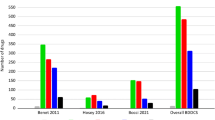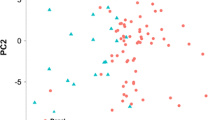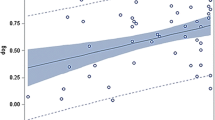No Heading
The Biopharmaceutics Classification System (BCS) was developed to allow prediction of in vivo pharmacokinetic performance of drug products from measurements of permeability (determined as the extent of oral absorption) and solubility. Here, we suggest that a modified version of such a classification system may be useful in predicting overall drug disposition, including routes of drug elimination and the effects of efflux and absorptive transporters on oral drug absorption; when transporter-enzyme interplay will yield clinically significant effects (e.g., low bioavailability and drug-drug interactions); the direction, mechanism, and importance of food effects; and transporter effects on postabsorption systemic drug concentrations following oral and intravenous dosing. These predictions are supported by a series of studies from our laboratory during the past few years investigating the effect of transporter inhibition and induction on drug metabolism. We conclude by suggesting that a Biopharmaceutics Drug Disposition Classification System (BDDCS) using elimination criteria may expand the number of Class 1 drugs eligible for a waiver of in vivo bioequivalence studies and provide predictability of drug disposition profiles for Classes 2, 3, and 4 compounds.
Similar content being viewed by others
References
1. G. L. Amidon, H. Lennernas, V. P. Shah, and J. R. Crison. A theoretical basis for a biopharmaceutics drug classification: the correlation of in vitro drug product dissolution and in vivo bio-availability. Pharm. Res. 12:413–420 (1995).
2. Food and Drug Administration. Guidance for Industry: Waiver of In Vivo Bioavailability and Bioequivalence Studies for Immediate-Release Solid Oral Dosage Forms Based on a Biopharmaceutics Classification System. Food and Drug Administration, Rockville, MD, 2000. Available at http://www.fda.gov/cder/guidance/index.htm
3. H. Lennernas. Human jejunal effective permeability and its correlation with preclinical drug absorption models. J. Pharm. Pharmacol. 49:627–638 (1997).
4. H. van de Waterbeemd. The fundamental variables of the bio-pharmaceutics classification system (BCS): a commentary. Eur. J. Pharm. Sci. 7:1–3 (1998).
5. H. H. Blume and B. S. Schug. The biopharmaceutics classification system (BCS): class III drugs—better candidates for BA/BE waiver? Eur. J. Pharm. Sci. 9:117–121 (1999).
6. D. Fleisher, C. Li, Y. Zhou, L. H. Pao, and A. Karim. Drug, meal and formulation interactions influencing drug absorption after oral administration. Clinical implications. Clin. Pharmacokinet. 36:233–254 (1999).
7. R. Lobenberg and G. L. Amidon. Modern bioavailability, bio-equivalence and biopharmaceutics classification system. New scientific approaches to international regulatory standards. Eur. J. Pharm. Biopharm. 50:3–12 (2000).
8. A. Avdeef. Physicochemical profiling (solubility, permeability and charge state). Curr. Top. Med. Chem. 1:277–351 (2001).
9. B. D. Rege, L. X. Yu, A. S. Hussain, and J. E. Polli. Effect of common excipients on Caco-2 transport of low-permeability drugs. J. Pharm. Sci. 90:1776–1786 (2001).
10. C. Tannergren, P. Langguth, and K. J. Hoffmann. Compound mixtures in Caco-2 cell permeability screens as a means to increase screening capacity. Pharmazie 56:337–342 (2001).
11. I. Kanfer. Report on the International Workshop on the Biopharmaceutics Classification System (BCS): scientific and regulatory aspects in practice. J. Pharm. Pharm. Sci. 5:1–4 (2002).
12. H. Lennernas, L. Knutson, T. Knutson, A. Hussain, L. Lesko, T. Salmonson, and G. L. Amidon. The effect of amiloride on the in vivo effective permeability of amoxicillin in human jejunum: experience from a regional perfusion technique. Eur. J. Pharm. Sci. 15:271–277 (2002).
13. M. N. Martinez and G. L. Amidon. A mechanistic approach to understanding the factors affecting drug absorption: a review of fundamentals. J. Clin. Pharmacol. 42:620–643 (2002).
14. M. E. Taub, L. Kristensen, and S. Frokjaer. Optimized conditions for MDCK permeability and turbidimetric solubility studies using compounds representative of BCS classes I–IV. Eur. J. Pharm. Sci. 15:331–340 (2002).
15. L. X. Yu, G. L. Amidon, J. E. Polli, H. Zhao, M. U. Mehta, D. P. Conner, V. P. Shah, L. J. Lesko, M. L. Chen, V. H. Lee, and A. S. Hussain. Biopharmaceutics classification system: the scientific basis for biowaiver extensions. Pharm. Res. 19:921–925 (2002).
16. C. A. Bergstrom, M. Strafford, L. Lazorova, A. Avdeef, K. Luthman, and P. Artursson. Absorption classification of oral drugs based on molecular surface properties. J. Med. Chem. 46:558–570 (2003).
17. C. Tannergren, T. Knutson, L. Knutson, and H. Lennernas. The effect of ketoconazole on the in vivo intestinal permeability of fexofenadine using a regional perfusion technique. Br. J. Clin. Pharmacol. 55:182–190 (2003).
18. M. Lindenberg, S. Kopp, and J. B. Dressman. Classification of orally administered drugs on the World Health Organization Model of Essential Medicines according to the biopharmaceutics classification system. Eur. J. Pharm. Biopharm. 58:265–278 (2004).
19. D. A. Smith. Design of drugs through a consideration of drug metabolism and pharmacokinetics. Eur. J. Drug Metab. Pharmacokinet. 3:193–199 (1994).
20. L. Z. Benet, S. Øie, and J. B. Schwarz. Design and optimization of dosage regimens: pharmacokinetic data. In: J. G. Hardman, L. E. Limbird, P. B. Molinoff, R. W. Ruddon, and A. G. Gilman (eds.), Goodman and Gilman’s The Pharmacological Basis of Therapeutics, 9th edition, McGraw Hill, New York, 1996, pp. 1707–1792.
21. K. E. Thummel and D. D. Shen. Design and optimization of dosage regimens: pharmacokinetic data. In: J. G. Hardman and L. E. Limbird (eds.), Goodman and Gilman’s The Pharmacological Basis of Therapeutics, 10th edition, McGraw Hill, New York, 2001, pp. 1924–2023.
22. C. A. Lipinski, F. Lombardo, B. W. Dominy, and P. J. Feeney. Experimental and computational approaches to estimate solubility and permeability in drug discovery and development settings. Adv. Drug Deliv. Rev. 46:3–26 (2001).
23. C. A. Lipinski. Drug-like properties and the causes of poor solubility and poor permeability. J. Pharmacol. Toxicol. Methods 44:235–249 (2000).
24. C. A. Lipinski. Chris Lipinski discusses life and chemistry after the Rule of Five. Drug Discov. Today 8:12–16 (2003).
25. N. A. Kasim, M. Whitehouse, C. Ramachandran, M. Bermejo, H. Lennernas, A. S. Hussain, H. E. Junginger, S. A. Stavchansky, K. K. Midha, V. P. Shah, and G. L. Amidon. Molecular properties of WHO essential drugs and provisional biopharmaceutical classification. Mol. Pharmaceut. 1:85–96 (2004).
26. M. Yazdanian, K. Briggs, C. Jankovsky, and A. Hawi. The “high solubility” definition of the current FDA guidance on biopharmaceutical classification system may be too strict for acidic drugs. Pharm. Res. 21:293–299 (2004).
27. C. L. Cummins, L. M. Mangravite, and L. Z. Benet. Characterizing the expression of CYP3A4 and efflux transporters (P-gp, MRP1, and MRP2) in CYP3A4-transfected Caco-2 cells after induction with sodium butyrate and the phorbol ester 12-O-tetradecanoylphorbol-13-acetate. Pharm. Res. 18:1102–1109 (2001).
28. C. L. Cummins, W. Jacobsen, and L. Z. Benet. Unmasking the dynamic interplay between intestinal P-glycoprotein and CYP3A4. J. Pharmacol. Exp. Ther. 300:1036–1045 (2002).
29. C. L. Cummins, W. Jacobsen, U. Christians, and L. Z. Benet. CYP3A4-transfected Caco-2 cells as a tool for understanding biochemical absorption barriers: studies with sirolimus and mid-azolam. J. Pharmacol. Exp. Ther. 308:143–155 (2004).
30. S. Tolle-Sander, J. Rautio, S. Wring, J. W. Polli, and J. E. Polli. Midazolam exhibits characteristics of a highly permeable P-glyco-protein substrate. Pharm. Res. 20:757–764 (2003).
31. N. Watanabe and L. Z. Benet. The effect of the interplay between CYP3A4 and P-gp on the metabolism of saquinavir and nifedipine in CYP3A4-transfected Caco-2 cells. Pharmaceutical Sciences World Congress, Kyoto, Japan, June, 2004, Abstract P2E-II-026.
32. C. L. Cummins, L. Salphati, M. J. Reid, and L. Z. Benet. In vivo modulation of intestinal CYP3A metabolism by P-glycoprotein: studies using the rat single-pass intestinal perfusion model. J. Pharmacol. Exp. Ther. 305:306–314 (2003).
33. J. H. Chang and L. Z. Benet, Interplay of multiple transporters and glucuronidating enzymes in LLC-PK1 cell lines. AAPS PharmSci. 4: Abstract T3257 (2002).
34. Food and Drug Administration. Guidance for Industry: Food-Effect Bioavailability and Fed Bioequivalence Studies. Food and Drug Administration, Rockville, MD, 2002. Available at http://www.fda.gov/cder/guidance/index.htm
35. G. K. Dresser, D. G. Bailey, B. F. Leake, U. I. Schwarz, P. A. Dawson, D. J. Freeman, and R. B. Kim. Fruit juices inhibit organic anion transporting polypeptide-mediated drug uptake to decrease the oral availability of fexofenadine. Clin. Pharmacol. Ther. 71:11–20 (2002).
36. Y. Y. Lau, C.-Y. Wu, H. Okochi, and L. Z. Benet. Ex situ inhibition of hepatic uptake and efflux significantly changes metabolism: hepatic enzyme-transporter interplay. J. Pharmacol. Exp. Ther. 308:1040–1045 (2004).
37. J. L. Lam and L. Z. Benet. Hepatic microsome studies are insufficient to characterize in vivo hepatic metabolic clearance and metabolic drug-drug interactions: studies of digoxin metabolism in primary rat hepatocytes vs. microsomes. Drug Metab. Dispos. 32:1311–1316 (2004).
38. H. Sun, Y. Huang, L. Frassetto, and L. Z. Benet. Effects of uremic toxins on hepatic uptake and metabolism of erythromycin. Drug Metab. Dispos. 32:1239–1246 (2004).
39. Y. Y. Lau, H. Okochi, and L. Z. Benet, Role of hepatic uptake and efflux transporters in the disposition of atorvastatin. AAPS Journal 6: Abstract T2352 (2004).
40. D. Sun, L. X. Yu, M. A. Hussain, D. A. Wall, R. L. Smith, and G. L. Amidon. In vitro testing of drug absorption for drug ‘developability’ assessment: forming an interface between in vitro preclinical data and clinical outcome. Curr. Opin. Drug Discov. Devel. 7:75–85 (2004).
41. M. Sasaki, H. Suzuki, K. Ito, T. Abe, and Y. Sugiyama. Trans-cellular transport of organic anions across a double-transfected Madin-Darby canine kidney II cell monolayer expressing both human organic anion-transporting polypeptide (OATP2/SLC21A6) and multidrug resistance-associated protein 2 (MRP2/ABCC2). J. Biol. Chem. 277:6497–6503 (2002).
42. M. Cvetkovic, B. Leake, M. F. Fromm, G. R. Wilkinson, and R. B. Kim. OATP and P-glycoprotein transporters mediate the cellular uptake and excretion of fexofenadine. Drug Metab. Dispos. 27:866–871 (1999).
43. C.-Y. Wu and L. Z. Benet. Disposition of tacrolimus in isolated perfused rat liver: influence of troleandomycin, cyclosporine, and GG918. Drug Metab. Dispos. 31:1292–1295 (2003).
44. Food and Drug Administration. Guidance for Industry: Drug Metabolism/Drug Interaction Studies in the Drug Development Process: Studies In Vitro. Food and Drug Administration, Rockville, MD, 1997. Available at http://www.fda.gov/cder/guidance/index.htm
45. T. D. Bjornsson, J. T. Callaghan, H. J. Einolf, V. Fischer, L. Gan, S. Grimm, J. Kao, S. P. King, G. Miwa, L. Ni, G. Kumar, J. McLeod, S. R. Obach, S. Roberts, A. Roe, A. Shah, F. Snikeris, J. T. Sullivan, D. Tweedie, J. M. Vega, and J. Walsh. and S. A Wrighton, The conduct of in vitro and in vivo drug-drug interaction studies: a PhRMA perspective. J. Clin. Pharmacol. 43:443–469 (2003).
46. S.-M. Huang and L. J. Lesko. Drug-drug, drug-dietary supplement and drug-citrus fruit and other food interactions: what have we learned? J. Clin. Pharmacol. 44:559–569 (2004).
47. L. Z. Benet, C. L. Cummins, and C.-Y. Wu. Transporter-enzyme interactions: implications for predicting drug-drug interactions from in vitro data. Curr. Drug Metab. 4:393–398 (2003).
48. S. K. Gupta, R. C. Manfro, S. J. Tomlanovich, J. G. Gambertoglio, M. R. Garovoy, and L. Z. Benet. Effect of food on the pharmacokinetics of cyclosporine in healthy subjects following oral and intravenous administration. J. Clin. Pharmacol. 30:643–653 (1990).
49. S. K. Gupta and L. Z. Benet. High fat meals increase the clearance of cyclosporine. Pharm. Res. 7:46–48 (1990).
50. J. E. Polli, L. X. Yu, J. A. Cook, G. L. Amidon, R. T. Borchardt, B. A. Burnside, P. S. Burton, M. L. Chen, D. P. Conner, P. J. Faustino, A. A. Hawi, A. S. Hussain, H. N. Joshi, G. Kwei, V. H. Lee, L. J. Lesko, R. A. Lipper, A. E. Loper, S. G. Nerurkar, J. W. Polli, D. R. Sanvordeker, R. Taneja, R. S. Uppoor, C. S. Vattikonda, I. Wilding, and G. Zhang. Summary workshop report: biopharmaceutics classification system—implementation challenges and extension opportunities. J. Pharm. Sci. 93:1375–1381 (2004).
51. World Health Organization, Multisource (Generic) Pharmaceutical Products: Guidelines on Registration Requirements to Establish Interchangeability. WHO Working Document QAS/04.093 Rev. 3 (2004).
52. D. F. Veber, S. R. Johnson, H. Y. Cheng, B. R. Smith, K. W. Ward, and K. D. Kopple. Molecular properties that influence the oral bioavailability of drug candidates. J. Med. Chem. 45:2615–2623 (2002).
53. A. K. Mandagere, T. N. Thompson, and K.-K. Hwang. Graphical model for estimating oral bioavailability of drugs in humans and other species from their Caco-2 permeability and in vitro liver enzyme metabolic stability rates. J. Med. Chem. 45:304–311 (2002).
Author information
Authors and Affiliations
Corresponding author
Rights and permissions
About this article
Cite this article
Wu, CY., Benet, L. Predicting Drug Disposition via Application of BCS: Transport/Absorption/ Elimination Interplay and Development of a Biopharmaceutics Drug Disposition Classification System. Pharm Res 22, 11–23 (2005). https://doi.org/10.1007/s11095-004-9004-4
Received:
Accepted:
Published:
Issue Date:
DOI: https://doi.org/10.1007/s11095-004-9004-4




